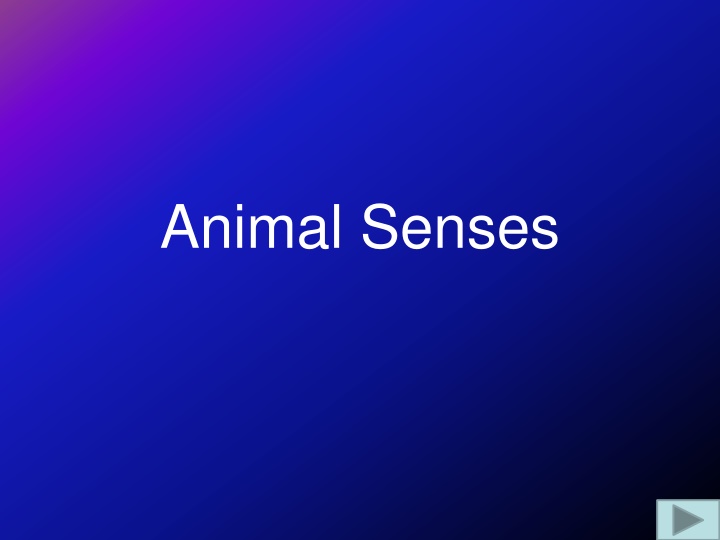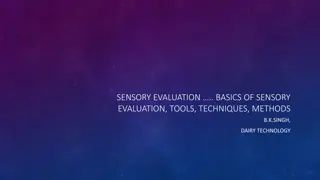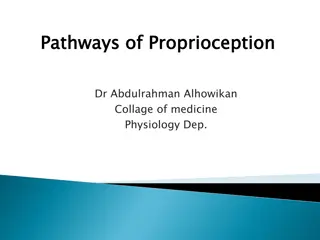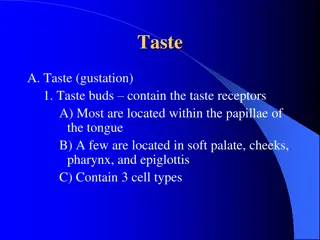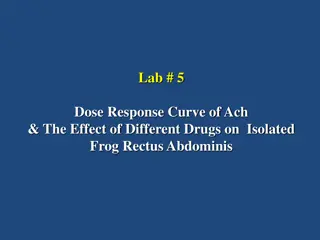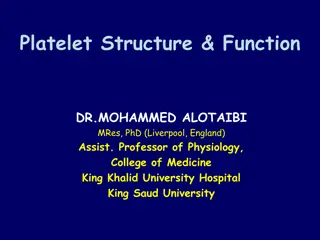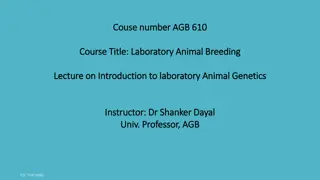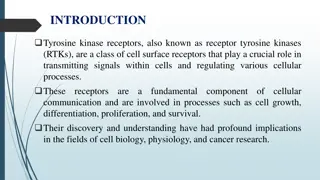Insights into Animal Senses and Receptors
Delve into the fascinating world of animal senses and receptors, from the varied photoreceptors detecting ultraviolet to infrared wavelengths to the specialized thermoreceptors allowing snakes to hunt in the dark. Explore the mechanisms of mechanoreceptors detecting body position and proprioceptors sensing muscle stretching. Discover the intricacies of chemoreceptors in the human olfactory organ and taste receptors distributed across the tongue. Through captivating images, gain a deeper understanding of how different animals perceive the world around them.
Download Presentation

Please find below an Image/Link to download the presentation.
The content on the website is provided AS IS for your information and personal use only. It may not be sold, licensed, or shared on other websites without obtaining consent from the author.If you encounter any issues during the download, it is possible that the publisher has removed the file from their server.
You are allowed to download the files provided on this website for personal or commercial use, subject to the condition that they are used lawfully. All files are the property of their respective owners.
The content on the website is provided AS IS for your information and personal use only. It may not be sold, licensed, or shared on other websites without obtaining consent from the author.
E N D
Presentation Transcript
Photoreceptors Vary from simple light/dark sensors in simple animals (e.g. worms) to complex organs in advanced animals. Wavelengths detected can vary from ultra- violet to red. Bees can see UV. Goldfish can see infra-red. Birds see red well. Image:Snail eye (xndr).jpg
Comparison of human and insect vision Human insect
Thermoreceptors Some snakes have infra-red sensitive pits that allow them to detect prey in the dark.
Humans can detect warmth with skin sensors Mosquitoes use thermoreceptors to find hosts Photo: A mosquito sucking blood
Mechanoreceptors Detect body position through touch, pressure, gravity, stretch and movement Statocysts detect gravity
Proprioceptors detect stretching in muscles and tendons to let you know where your limbs are.
Chemoreceptors Human olfactory organ
Human Taste Receptors The following slide shows what was once thought to be the main areas where we detect the 4 main tastes. This is now considered to be inaccurate. We have taste buds all over out tongues to detect all of these tastes as well as another taste called umami which is described as meaty or brothy .
Human taste Bitter Sour Sour Salt Salt Sweet
Male moths use their feathery antennae to detect females many km away
Flies feet smell no not foot odour they have chemosensory hairs that taste or smell the surface they are on
Snakes have a Jacobsons organ into which their tongue is inserted after sampling the air.
Animals can gain valuable information using their chemosenses
Find prey Detect predators Check food Recognise others defence Mark territory Communication Sexual attraction Alarm signals Make a trail (e.g. ants)
Hearing The human ear can hear from 20 to 20 000 Hz
Bats can hear up to over 80 000 Hz (ultrasonic) and use echolocation
Dolphins and other cetaceans use sound for echolocation
Infrasound Animals such as whales and elephants use deep infrasound to communicate over long distances
Electric field detection Many fish can detect electric fields. Some produce their own field and use it to detect objects around them. Conductors (e.g. animals) distort the field differently from resistors (e.g. rocks)
The platypus detects the tiny electric output of its prey such as shrimps.
Magnetic field detection The Earth has a magnetic field
Animals such as pigeons, turtles and trout use Earth s magnetic field to navigate. Te Mutu Te Mutu
